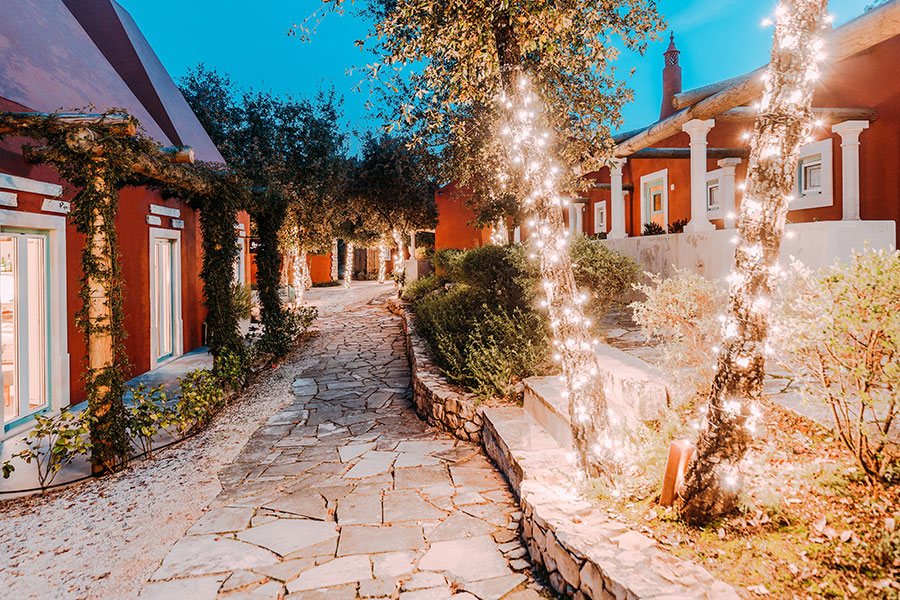
Receive an exclusive offer when you book your stay: MILLENNIALPT
The word sanctuary often conjures sacred halls or hushed cathedrals, yet in the spiritual heart of Fatima, tucked just beyond the crowds of pilgrims and the monumental shrine, there exists a more intimate form of sanctuary. At Luz Charming Houses, soul meets soil in a setting that feels at once ancient and imaginative all while being humble yet utterly extraordinary.
What husband-wife founders Ana Alves and Pedro Augusto Silva have created is not simply a boutique hotel. It is a village reimagined. A living memory of Portugal’s architectural and spiritual past with its eyes fixed firmly on the future.
Beyond Boutique: Inside the Spirit of Luz Houses
To call Luz Charming Houses a boutique hotel is like calling a symphony a song. The property transcends labels. Comprised of scattering terra-cotta colored cottages nestled into the wooded folds of the central Portuguese countryside, this place evokes a film set more than hospitality real estate.
Ana, an architect with a graduate degree in restoration and rehabilitation, reinterpreted the simple, ancestral village architecture of the region with poetic precision. Her husband Pedro, once in human resources, left the corporate world behind to fully dedicate himself to the project.
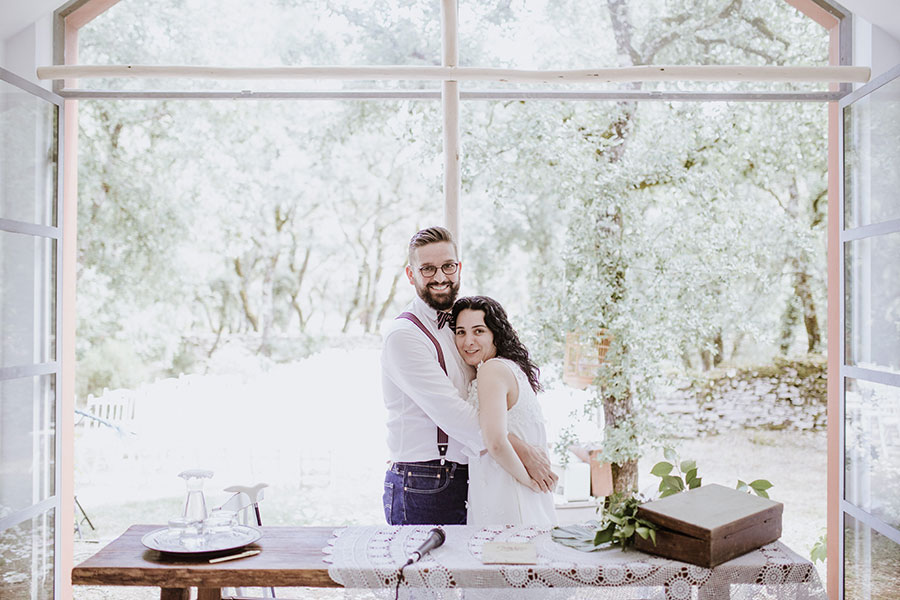
Their story is deeply entwined with the land. This was once Pedro’s family property, handed down through generations. Ana and Pedro have not only preserved its legacy but have expanded it into a kind of storytelling in stone and silence. “Each house tells a different story. I wanted people to feel like they were walking through different times. That’s why the stones change. That’s why the roofs are different. It’s not accidental. It’s all rooted in how people lived.”
She had spent over a year immersed in architectural research, meticulously studying old village homes throughout the region. “We tried to tell the story of the houses through the way the stones were laid,” Ana tells us, pointing out the subtle differences in masonry styles that signify different time periods.
Some houses exhibit rough-hewn stone reminiscent of 18th-century simplicity, while others hint at early 20th-century prosperity with finer masonry and more elaborate joinery. The result is a living museum of vernacular design, made not to mimic but to honor the authentic soul of the past.
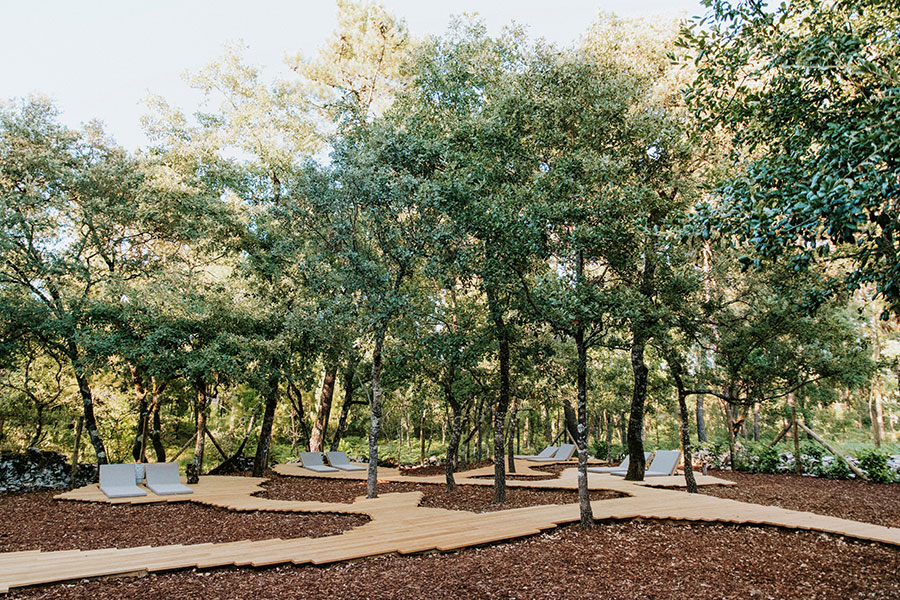
Design Forward, Soul Deep
Every detail at Luz Charming Houses whispers thoughtfulness. The sunken seating in the poolside deck, modeled after the branching limbs of a tree, encapsulated by the leafy canopy above makes you feel as though you’re nestled within the treetops themselves.
Originally conceived during the pandemic to naturally distance guests (and now simply a marvel of social architecture) the design was a subtle creation of separation and flow. And the atmosphere is simply one of soulful precision.
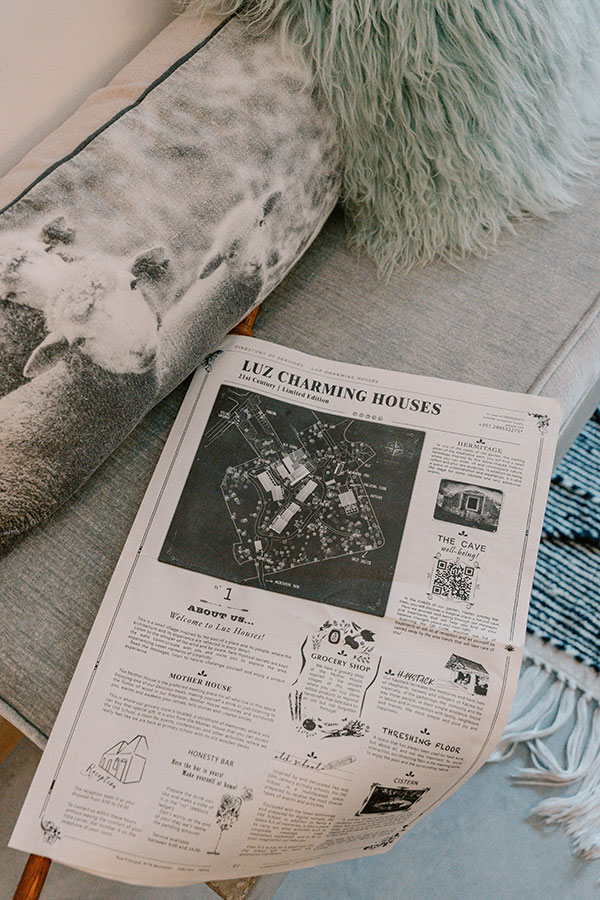
The environment itself is rich with symbolism and story. The newspaper-style welcome guide in each room, for instance, is a deliberate homage to the era when the apparitions of Lady Fatima were first recognized by the Church. It’s printed in the style of a century-old publication, anchoring each guest in the time and spirit of Fatima’s mystique.
Even more emblematic is the restored pool bar—a charming yellow and red kiosk with a story as whimsical as the setting itself. While researching ideas for the pool bar, Ana came across an image of a 1970s Lisbon kiosk, marked by graffiti but rich in character. She fell in love with its nostalgic charm. She approached the Lisbon City Council to ask if they had any old kiosks they might be willing to donate to her project. They did, though it was in disrepair and required significant restoration. Ana accepted without hesitation.
As she began the refurbishment, she discovered a small plaque on the side…it was the exact model of the kiosk she had seen in the photograph. The synchronicity was unmistakable. Now, fully restored and shaded by trees, the kiosk pulses with new life as the pool bar, a true symbol of divine flow, serendipity, and Ana’s unwavering creative vision. “There’s a certain magic in how things come together here. Even when I’m designing, sometimes it feels like I’m just listening. The land tells me what it wants.”
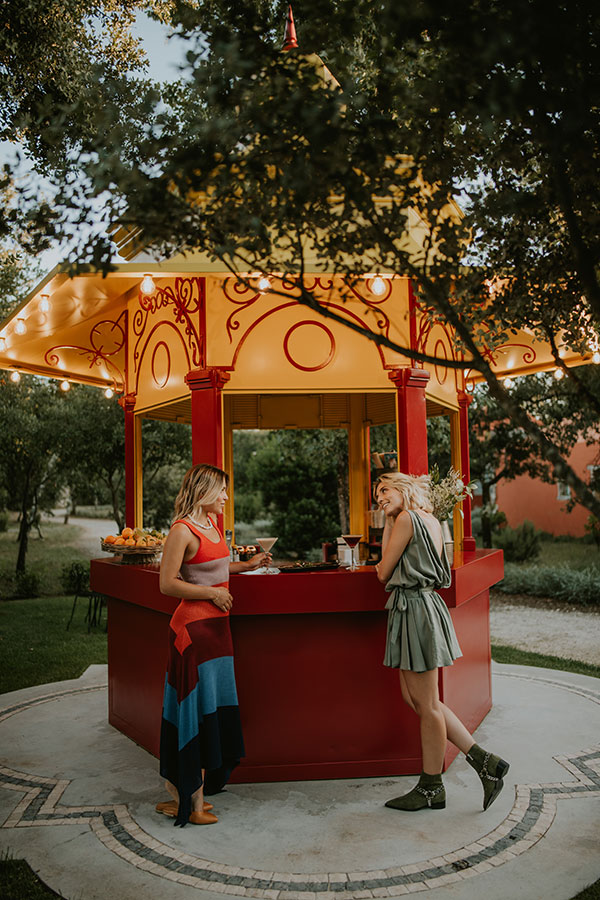
Nearby, the threshing floor has found new life as the communal firepit, though its soul remains rooted in ritual. It once served as the space where wheat was pounded and sifted into flour, a process whose legacy lives on every Thursday when fresh bread, warm, crusty, and sacred emerges from the aptly named Mother-House kitchen.
Even the pool itself was elevated above ground level to protect wandering children, designed with the foresight of a family that values both beauty and safety. In the back of the property, sheep graze in a quiet pen next to the chicken coop, echoing the land’s pastoral past when shepherds guided their flocks across these hills.
Along the Haystack community room, a checkered wooden panel leans like a forgotten poem. A nod to the herbal drying racks that once sustained the village. These are not flourishes. They are reverent details, sewn into the very seams of Luz, crafting a place where the past is not preserved, but perpetually present.
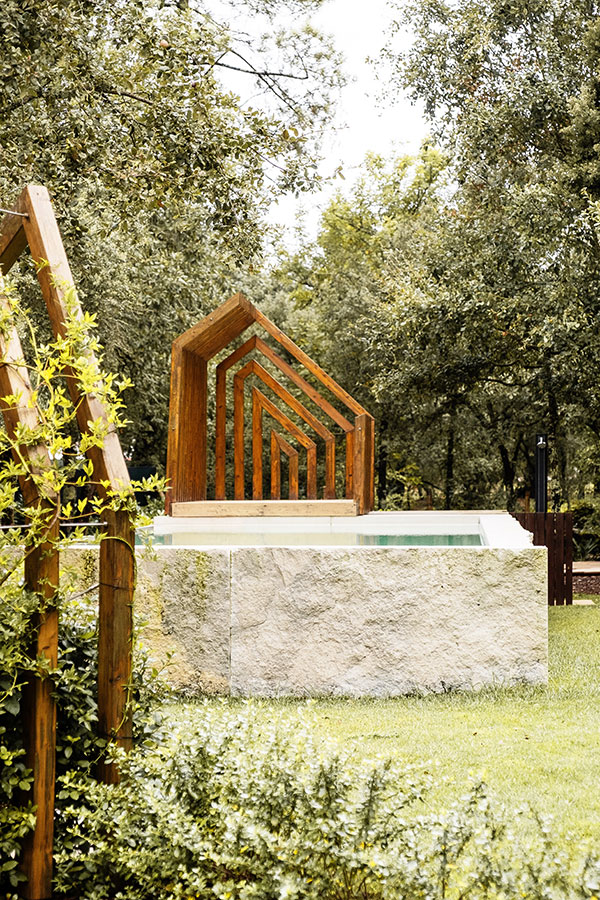
The Heart of It All: The Mother-House
At the center of Luz stands the Mother-House, the communal hearth and soul of the village. Styled like a minimalist farmhouse, it brings together pastel hues, natural woods, and concrete accents with remarkable grace. Inside, you’ll find a cozy lounge with intimate reading nooks, an honesty bar where you can pour a glass of port and jot your tally in a leather-bound ledger, and a charming shop offering local Portuguese craft goods and artisanal snacks.
The dining room, rustic and radiant, invites lingering. Breakfast here is no ordinary meal. It is a ritual. Organic, farm-to-table offerings arrive like art. Perfectly boiled eggs, ripe fruit, chia seed pudding layered like an edible mosaic, fresh yogurt, a proud array of local cheeses and meats, and an ever-tempting lineup of bread and pastries. And the cappuccino? Arguably the best in Portugal. And this comes from a seasoned guest who has sipped her way through 15 hotels across the country.
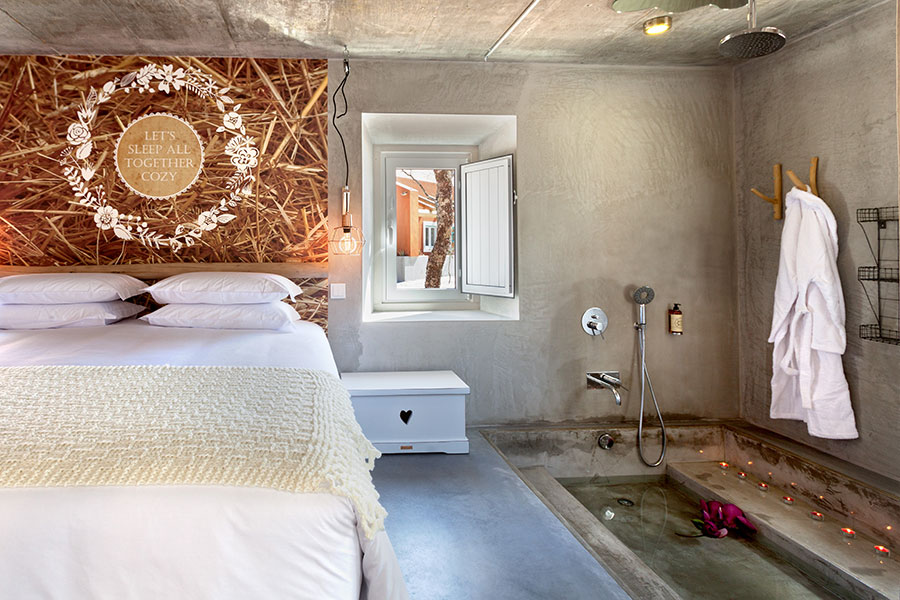
Stay in Style: The Rooms at Luz
Each room at Luz Charming Houses is unique, a bespoke retreat shaped by Ana’s architectural vision and Pedro’s hospitality ethos. Our “Superior Suite” was a quiet triumph of intimacy and imagination. It featured a spacious living room warmed by a fireplace, a compact yet efficient kitchenette, charming old-school windows, skylights that dappled light across whitewashed walls, and a king-sized bed perched above it all, as though in a storybook loft.
One of the most intriguing elements was the open-plan bathroom. On either side of the bed, separated only by a wraparound curtain and a bit of courage, were the stone sunken shower and a sculptural bathtub that felt more like a Roman bath than a modern amenity. The toilet, discreetly hidden behind closet doors, added a touch of privacy to what was otherwise an uncommonly intimate layout. For couples, this configuration was as close and as honest as one could get. A true invitation to slow down, strip back, and just be.
Soft linens, carefully considered textures, and gentle light complete the experience. The rooms at Luz don’t just provide comfort, they reflect a philosophy. That beauty and presence are in the details, and luxury is not extravagant but intentional.
Fatima Reconsidered: A New Spiritual Vocabulary
The town of Fatima carries undeniable spiritual gravity. Known for the Marian apparitions of 1917, it remains one of the world’s most visited pilgrimage sites. But to stay at Luz is to experience Fatima through a different lens, one that is gentle, feminine, even maternal.
This is particularly felt at the Hermitage, an A-framed meditation chapel nestled at the far end of the property. Here floor to ceiling glass accordion doors open to a quiet glade, and strawbale benches provide rest. Sitting inside its walls, one feels embraced and swaddled in a silence that is soft, ancient, and compassionate. Though no statues proclaim it, the presence of the Divine Mother permeates. It is not imposed but sensed. As if the land itself remembers.
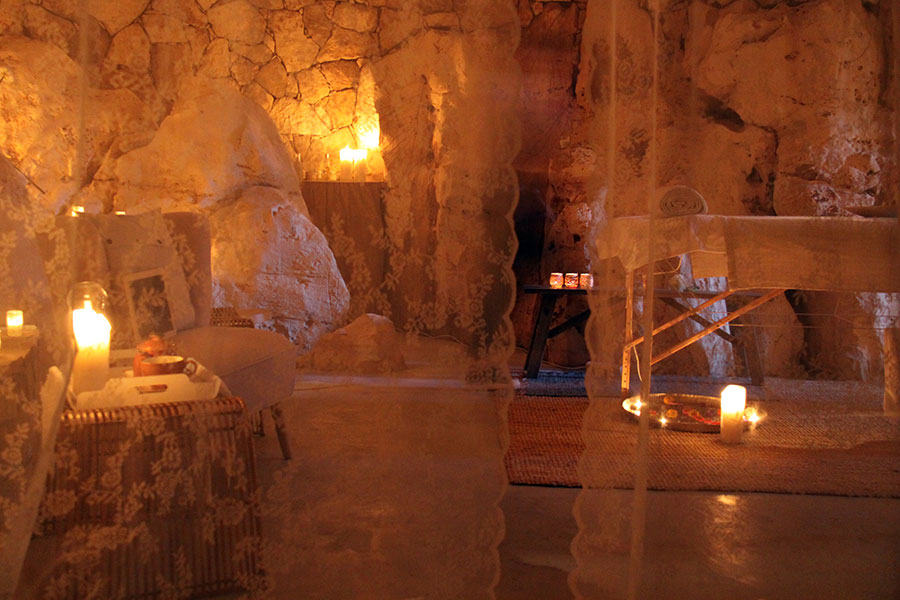
That sense continues in the Cave Spa. Once Pedro’s self-professed party room and wine cellar, it has been transformed by Ana’s visionary mind into a womb-like sanctuary carved from natural stone. The humidity, the coolness, the grounding quality of the stone all conspire to transport guests into a primal, healing quietude.
Hundreds of candles flicker softly against the stone, their glow magnified by the polished surfaces and the resonance of a nearby fountain, adding whimsy and movement to the stillness. Receiving a massage here feels less like self-care and more like ancestral reconnection.
Where Time Moves Differently
At Luz Charming Houses, time bends. Morning begins with the aroma of regional pastries and locally sourced coffee. A leisurely breakfast under the tiled eaves of the Mother-House is less about nourishment and more about reorientation. Afternoons can be spent cycling through wooded trails, lounging by the pool, or simply meandering the garden where messages hidden among olive and holm oak trees beckon you to reflect.
Evenings are perhaps the most magical. The Haystack glows golden against the dusk, offering an idyllic backdrop for an intimate wedding and gatherings. Its design mirrors the pastoral structures of old Fatima, but with modern sensibility and artisan finesse. Ana, who delights in curating wedding decor herself, insists on knowing every guest by name. She emphasizes, “We want it to feel like a return, not just a stay.”
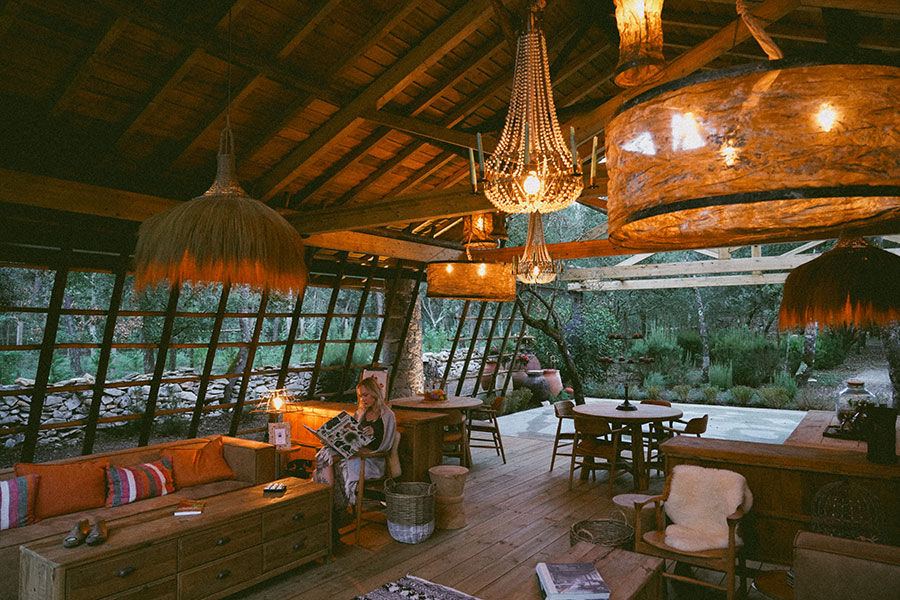
Living Heritage, Breathing Architecture
From the threshing floor to the sheep shelter, the craft store to the meditative paths, every corner of Luz is organic. The design never overpowers nature. It partners with it. Stones are imperfectly perfect, walls intentionally textured, paths gently winding. “Mother Nature planted this garden,” Pedro jokes, but there was no mistaking the reverence behind the jest.
Guests often feel the call to return. One couple from Florida has made Luz their anniversary tradition. Others, like Lisbonites or Northern Europeans, retreat here for winter’s fireplace intimacy, or for the community workshops held in the Old Schoolhouse.
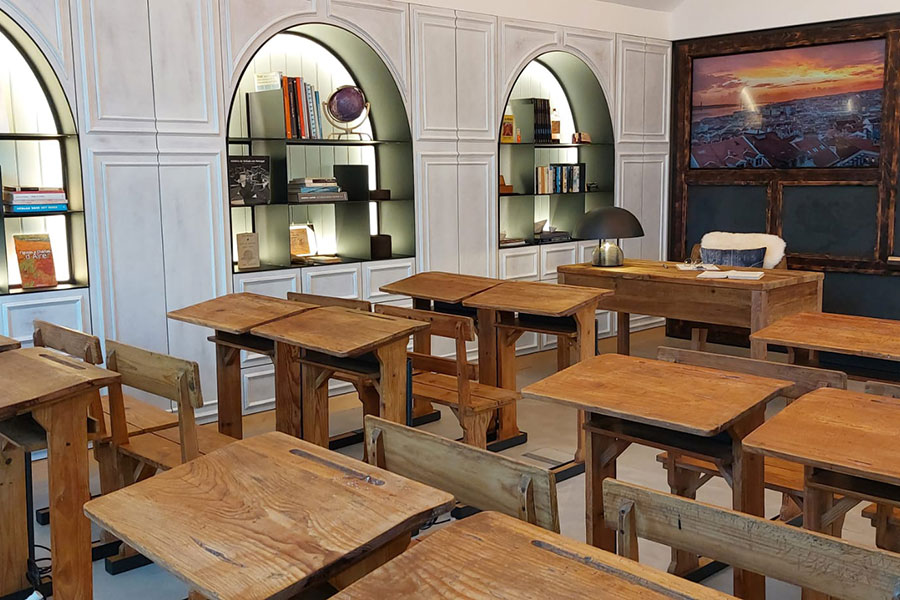
As for the locals, there’s pride, a sense that someone has honored the land not with grandeur, but with grace. “We didn’t build Luz just for tourists. We built it for the soul of this region. Locals come here. They bring stories, they teach workshops, they’re part of it,” Pedro notes.
The Light of Fatima: A Brief History of the Apparitions
To understand the spiritual resonance of Luz Charming Houses, one must understand the gravity of its setting. Fatima is globally known as the site of the Marian apparitions of 1917, when three shepherd children (Lucia, Jacinta and Franscico) claimed to witness the Virgin Mary in the flesh. These events, occurring in the Cova da Iria fields, drew tens of thousands of onlookers and were later recognized by the Catholic Church as miraculous.
Lucia dos Santos, the eldest of the three children, went on to become the main chronicler of these encounters. Her detailed writings and steadfast devotion laid the foundation for Fatima’s rise as a pilgrimage site. Each year, millions travel to the Shrine of Our Lady of Fatima to light candles, attend mass, or simply sit in quiet reflection.
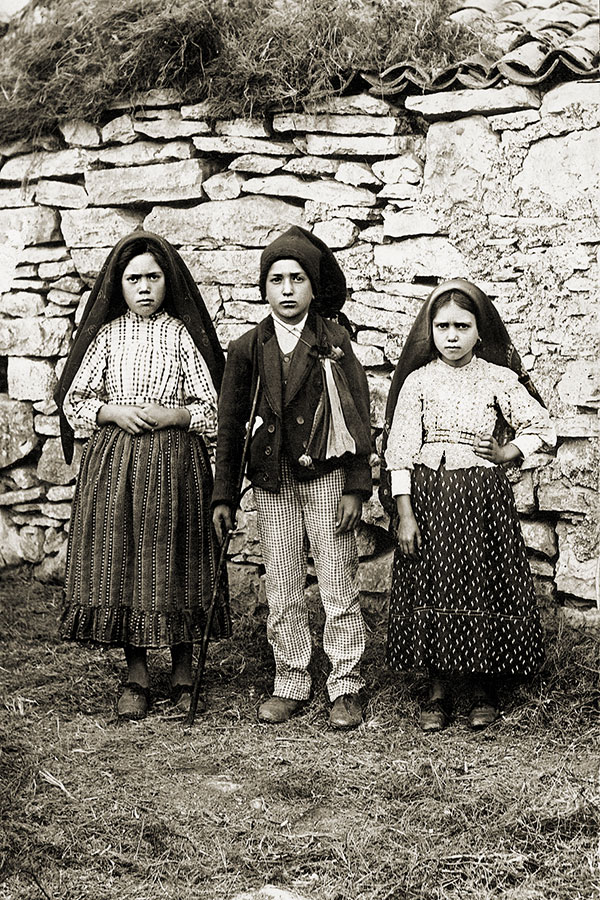
The significance of this history is not didactic at Luz, but it is undeniably present. The land itself feels steeped in reverence, and it is no coincidence that Pedro’s great-grandfather was Lucia’s godfather. The sense of lineage, both familial and spiritual, quietly permeates the soil. Luz, in this context, is not merely a design marvel. It is an homage to a sacred past, experienced through all the senses.
The Luz of the Future
Though steeped in heritage, Luz Charming Houses is no relic. Sustainability, wellness, and creativity infuse its DNA. An electric car charger in the guest lot. A zero-waste kitchen that sources produce locally. Yoga and bread-making, wine tastings and herbal walks.
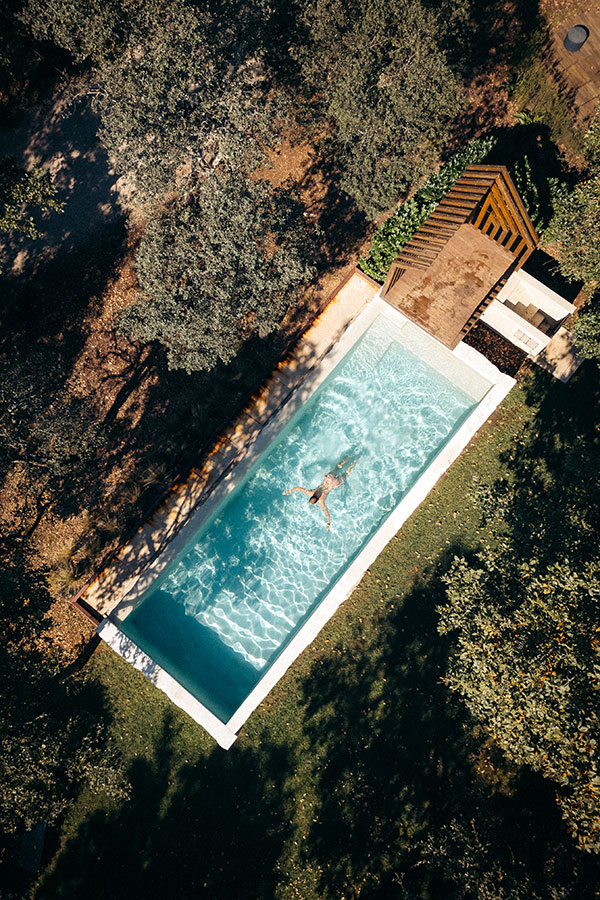
Each new offering feels like a natural evolution, not an addition. The land asks, and Ana and Pedro respond. “We don’t want to impress people. We want them to feel something. We want Luz to meet people where they are—emotionally, spiritually. This is not a hotel, it’s a feeling,” Pedro tells us. It is with this intention that the mission of the property is to invoke a “soul experience.”
It’s rare to find a place that manages to be this spiritual without preaching, this beautiful without trying too hard, this intimate without becoming intrusive. Yet that is Luz. A home. A hearth. A whisper. And a light.
FAQ: Luz Charming Houses
Where is Luz Houses located?
In the center of Portugal, in Fatima, just a 10-minute walk from the Shrine of Fatima and 1 minute from the A1 highway exit.
How many rooms are available?
There are 15 accommodations: 7 Double Superior Rooms, 2 Deluxe, 3 Standard Suites, 2 Superior Suites, and 1 Master Suite.
Is Luz Houses suitable for weddings or events?
Yes. The property accommodates intimate weddings (up to 60 guests), with the Haystack Bar serving as a venue. Full buyouts are available.
Are there wellness activities available?
Yes. Guests can enjoy the Cave Spa, yoga, pilates, pottery workshops, nature walks, and more.
Is the hotel family-friendly?
Absolutely. Families are welcome, and there are activities suited to both children and adults.
How do I book a stay?
Visit www.luzhouses.pt or contact [email protected].
Is the property pet-friendly?
Pets are not typically allowed; however, exceptions may be made upon request.
